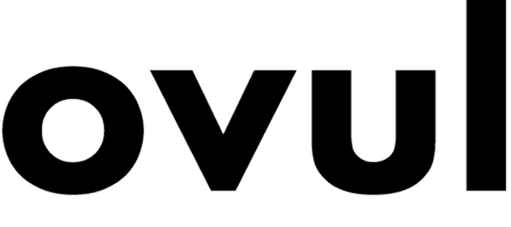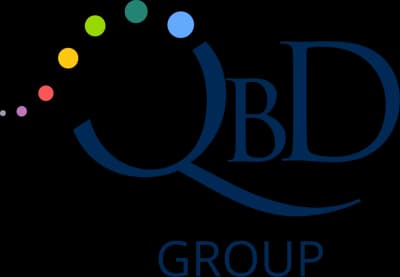Your Virtual Chief Regulatory Officer
Bring medical innovation to market while we manage compliance
Trusted by next-gen companies
Human expertise and AI efficiency in one comprehensive product
Implants, digital therapeutics, or cancer diagnostics... All are supported
Complete certification coverage
Cover ISO 13845, 21 CFR, MDR 2017/745, or IVDR 2017/746 and all the associated consensus standards
Clear certification roadmap
All compliance requirements are identified and implemented for your device, no matter how complex
Completed!
In Progress
Prove your medical device’s safety and effectiveness to ensure it works and is safe for patients.
Completed!
Not Started
Identify, assess, and mitigate potential risks to ensure the safety and effectiveness of your medical device.
Completed!
In Progress
Link requirements to design, testing, and verification to ensure your medical device meets all intended needs.
Completed!
In Progress
Prove your medical device’s safety and effectiveness to ensure it works and is safe for patients.
Completed!
Not Started
Identify, assess, and mitigate potential risks to ensure the safety and effectiveness of your medical device.
Completed!
In Progress
Link requirements to design, testing, and verification to ensure your medical device meets all intended needs.
Completed!
In Progress
Prove your medical device’s safety and effectiveness to ensure it works and is safe for patients.
Completed!
Not Started
Identify, assess, and mitigate potential risks to ensure the safety and effectiveness of your medical device.
Completed!
In Progress
Link requirements to design, testing, and verification to ensure your medical device meets all intended needs.
Completed!
In Progress
Prove your medical device’s safety and effectiveness to ensure it works and is safe for patients.
Completed!
Not Started
Identify, assess, and mitigate potential risks to ensure the safety and effectiveness of your medical device.
Completed!
In Progress
Link requirements to design, testing, and verification to ensure your medical device meets all intended needs.
Completed!
Editing
Monitor your medical device’s performance and safety after it’s on the market.
Completed!
Approval Required
Ensure your employees are trained to develop on maintain your medical device.
Completed!
In Progress
Identify and prioritize user needs of your medical device.
Completed!
Editing
Monitor your medical device’s performance and safety after it’s on the market.
Completed!
Approval Required
Ensure your employees are trained to develop on maintain your medical device.
Completed!
In Progress
Identify and prioritize user needs of your medical device.
Completed!
Editing
Monitor your medical device’s performance and safety after it’s on the market.
Completed!
Approval Required
Ensure your employees are trained to develop on maintain your medical device.
Completed!
In Progress
Identify and prioritize user needs of your medical device.
Completed!
Editing
Monitor your medical device’s performance and safety after it’s on the market.
Completed!
Approval Required
Ensure your employees are trained to develop on maintain your medical device.
Completed!
In Progress
Identify and prioritize user needs of your medical device.
Completed!
In Progress
Prove your medical device’s safety and effectiveness to ensure it works and is safe for patients.
Completed!
Not Started
Identify, assess, and mitigate potential risks to ensure the safety and effectiveness of your medical device.
Completed!
In Progress
Link requirements to design, testing, and verification to ensure your medical device meets all intended needs.
Completed!
In Progress
Prove your medical device’s safety and effectiveness to ensure it works and is safe for patients.
Completed!
Not Started
Identify, assess, and mitigate potential risks to ensure the safety and effectiveness of your medical device.
Completed!
In Progress
Link requirements to design, testing, and verification to ensure your medical device meets all intended needs.
Completed!
In Progress
Prove your medical device’s safety and effectiveness to ensure it works and is safe for patients.
Completed!
Not Started
Identify, assess, and mitigate potential risks to ensure the safety and effectiveness of your medical device.
Completed!
In Progress
Link requirements to design, testing, and verification to ensure your medical device meets all intended needs.
Completed!
In Progress
Prove your medical device’s safety and effectiveness to ensure it works and is safe for patients.
Completed!
Not Started
Identify, assess, and mitigate potential risks to ensure the safety and effectiveness of your medical device.
Completed!
In Progress
Link requirements to design, testing, and verification to ensure your medical device meets all intended needs.
Completed!
Editing
Monitor your medical device’s performance and safety after it’s on the market.
Completed!
Approval Required
Ensure your employees are trained to develop on maintain your medical device.
Completed!
In Progress
Identify and prioritize user needs of your medical device.
Completed!
Editing
Monitor your medical device’s performance and safety after it’s on the market.
Completed!
Approval Required
Ensure your employees are trained to develop on maintain your medical device.
Completed!
In Progress
Identify and prioritize user needs of your medical device.
Completed!
Editing
Monitor your medical device’s performance and safety after it’s on the market.
Completed!
Approval Required
Ensure your employees are trained to develop on maintain your medical device.
Completed!
In Progress
Identify and prioritize user needs of your medical device.
Completed!
Editing
Monitor your medical device’s performance and safety after it’s on the market.
Completed!
Approval Required
Ensure your employees are trained to develop on maintain your medical device.
Completed!
In Progress
Identify and prioritize user needs of your medical device.
Eliminate resource drain
Don't let compliance cost you time and energy, our reliable AI and human experts let you innovate without interruption
Hey there, I am lost trying to put together my system requirements. Can you help me out?
Dedicated experts make sure it's done right
Our team of seasoned experts have years of experience to guide you through any challenge
Our package with Formly is exactly what we wanted and what we needed. No BS, no fluff. Formly's services are straight to the point and the team is so pleasant to work with. As a small business and a startup, that's what you really need.
Anina LanghansCo-Founder & Product Lead LipoCheck
Get to market fast and stay there
Skip the consultant email chains and get your certification and compliance done in record time
Scale your product, not your team
Compliance as a service powerful enough to keep your team lean so you can focus on what matters
One platform, all your devices
Manage multiple devices at once and eliminate redundant work.
Scale across continents
Breeze through multi-market compliance without drowning in red tape.
Predicable pricing tailored to you
A reliable long-term partner that gives you exactly what you need
Pre-Certification
Get on the market fast with us as your regulatory expert. Everything you need for certification covered by one transparent fee.
- Fully managed regulatory support
- FDA, MDR, IVDR
- All product types
- Quality Management System
- Technical Documentation
- eQMS
- Audit Support
- PRRC
- Dedicated Expert
Post-Certification
Stay compliant effortlessly without draining resources. Our service fits your needs from self-manged to fully outsourced.
- Fully managed ongoing compliance
- eQMS
- Change Assistance
- Complaint Handling
- Periodic Reports
- Surveillance
- Employee Training
- Compliance Alerts
- Dedicated Expert
Happy companies we've certified
Our customers are our best advocates. Here's what they have to say about us.
We know we have the back office covered with Formly. They are hands on and make our medical device compliance easy. You get a team who provides guidance on best practices in the medical device compliance world, and you spend a fraction of the time you would on this work otherwise.

Philipp Piroth
Co-Founder & CEO @ Myoact
Our package with Formly is exactly what we wanted and what we needed —no BS, no fluff. Formly's services are straight to the point and the team is so pleasant to work with. As a small business and a startup, that's what you really need.

Anina Langhans
Co-Founder & Product Lead LipoCheck
The more I work on Formly the more it amazes me. Hats off for making a product that is easy to use and immediately brings users insane value!

Dr. Julian Kruse
Co-Founder & CMedO @ coobi
I have been continually impressed with Spencer's Quality and Regulatory expertise. The caliber of industry experience matched with their incredible software is an unbeatable combo.

Angela Frederickson
CEO @ Sparq Compliance
Orcason has joined Formly for their FDA 510(k).
Elias Revonta
CEO & Founder Orcason
A reliable, efficient, and cost-effective partner that made navigating a complex regulatory environment with our small team feel easy.

Alberto Villanueva Tormo
Co-Founder @ Amaia-App
Leveraging their AI and regulatory expertise dramatically simplified our pathway to EU MDR approval. Would highly recommend!

Michelle Hoffmann
Co-Founder @ meal&heal
The quality of service we received from Formly was exceptional. Spencer and his team found the right regulatory strategy for our needs and the software made the execution super easy.

Nicholas Gentry
Co-Founder @ LifeAhead
We chose Formly as our regulatory partner based on their extensive EU and US market knowledge and the depth of expertise their consultants bring.
Anonymous
Founder @ AI HealthTech Startup
We know we have the back office covered with Formly. They are hands on and make our medical device compliance easy. You get a team who provides guidance on best practices in the medical device compliance world, and you spend a fraction of the time you would on this work otherwise.

Philipp Piroth
Co-Founder & CEO @ Myoact
Our package with Formly is exactly what we wanted and what we needed —no BS, no fluff. Formly's services are straight to the point and the team is so pleasant to work with. As a small business and a startup, that's what you really need.

Anina Langhans
Co-Founder & Product Lead LipoCheck
The more I work on Formly the more it amazes me. Hats off for making a product that is easy to use and immediately brings users insane value!

Dr. Julian Kruse
Co-Founder & CMedO @ coobi
I have been continually impressed with Spencer's Quality and Regulatory expertise. The caliber of industry experience matched with their incredible software is an unbeatable combo.

Angela Frederickson
CEO @ Sparq Compliance
Orcason has joined Formly for their FDA 510(k).
Elias Revonta
CEO & Founder Orcason
A reliable, efficient, and cost-effective partner that made navigating a complex regulatory environment with our small team feel easy.

Alberto Villanueva Tormo
Co-Founder @ Amaia-App
Leveraging their AI and regulatory expertise dramatically simplified our pathway to EU MDR approval. Would highly recommend!

Michelle Hoffmann
Co-Founder @ meal&heal
The quality of service we received from Formly was exceptional. Spencer and his team found the right regulatory strategy for our needs and the software made the execution super easy.

Nicholas Gentry
Co-Founder @ LifeAhead
We chose Formly as our regulatory partner based on their extensive EU and US market knowledge and the depth of expertise their consultants bring.
Anonymous
Founder @ AI HealthTech Startup
We know we have the back office covered with Formly. They are hands on and make our medical device compliance easy. You get a team who provides guidance on best practices in the medical device compliance world, and you spend a fraction of the time you would on this work otherwise.

Philipp Piroth
Co-Founder & CEO @ Myoact
Our package with Formly is exactly what we wanted and what we needed —no BS, no fluff. Formly's services are straight to the point and the team is so pleasant to work with. As a small business and a startup, that's what you really need.

Anina Langhans
Co-Founder & Product Lead LipoCheck
The more I work on Formly the more it amazes me. Hats off for making a product that is easy to use and immediately brings users insane value!

Dr. Julian Kruse
Co-Founder & CMedO @ coobi
I have been continually impressed with Spencer's Quality and Regulatory expertise. The caliber of industry experience matched with their incredible software is an unbeatable combo.

Angela Frederickson
CEO @ Sparq Compliance
Orcason has joined Formly for their FDA 510(k).
Elias Revonta
CEO & Founder Orcason
A reliable, efficient, and cost-effective partner that made navigating a complex regulatory environment with our small team feel easy.

Alberto Villanueva Tormo
Co-Founder @ Amaia-App
Leveraging their AI and regulatory expertise dramatically simplified our pathway to EU MDR approval. Would highly recommend!

Michelle Hoffmann
Co-Founder @ meal&heal
The quality of service we received from Formly was exceptional. Spencer and his team found the right regulatory strategy for our needs and the software made the execution super easy.

Nicholas Gentry
Co-Founder @ LifeAhead
We chose Formly as our regulatory partner based on their extensive EU and US market knowledge and the depth of expertise their consultants bring.
Anonymous
Founder @ AI HealthTech Startup
We know we have the back office covered with Formly. They are hands on and make our medical device compliance easy. You get a team who provides guidance on best practices in the medical device compliance world, and you spend a fraction of the time you would on this work otherwise.

Philipp Piroth
Co-Founder & CEO @ Myoact
Our package with Formly is exactly what we wanted and what we needed —no BS, no fluff. Formly's services are straight to the point and the team is so pleasant to work with. As a small business and a startup, that's what you really need.

Anina Langhans
Co-Founder & Product Lead LipoCheck
The more I work on Formly the more it amazes me. Hats off for making a product that is easy to use and immediately brings users insane value!

Dr. Julian Kruse
Co-Founder & CMedO @ coobi
I have been continually impressed with Spencer's Quality and Regulatory expertise. The caliber of industry experience matched with their incredible software is an unbeatable combo.

Angela Frederickson
CEO @ Sparq Compliance
Orcason has joined Formly for their FDA 510(k).
Elias Revonta
CEO & Founder Orcason
A reliable, efficient, and cost-effective partner that made navigating a complex regulatory environment with our small team feel easy.

Alberto Villanueva Tormo
Co-Founder @ Amaia-App
Leveraging their AI and regulatory expertise dramatically simplified our pathway to EU MDR approval. Would highly recommend!

Michelle Hoffmann
Co-Founder @ meal&heal
The quality of service we received from Formly was exceptional. Spencer and his team found the right regulatory strategy for our needs and the software made the execution super easy.

Nicholas Gentry
Co-Founder @ LifeAhead
We chose Formly as our regulatory partner based on their extensive EU and US market knowledge and the depth of expertise their consultants bring.
Anonymous
Founder @ AI HealthTech Startup
Frequently Asked Questions
Answers to common questions about FormlyAI and its features







